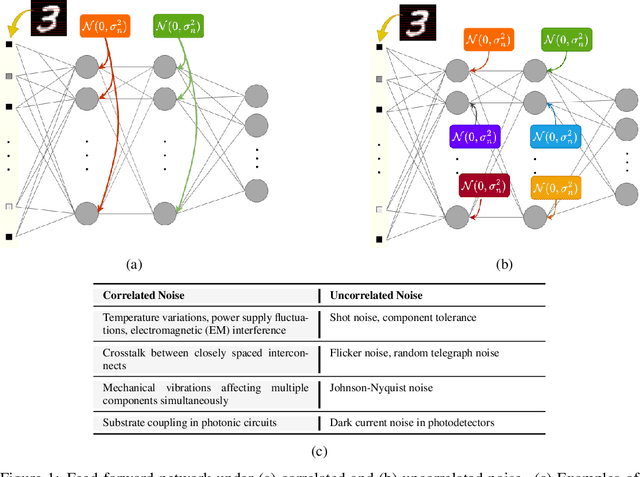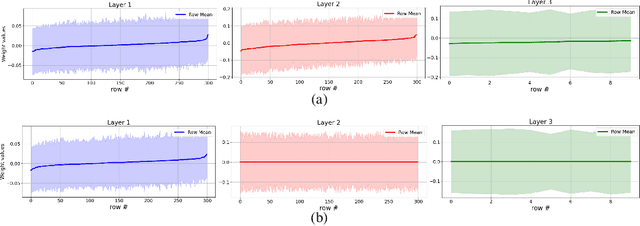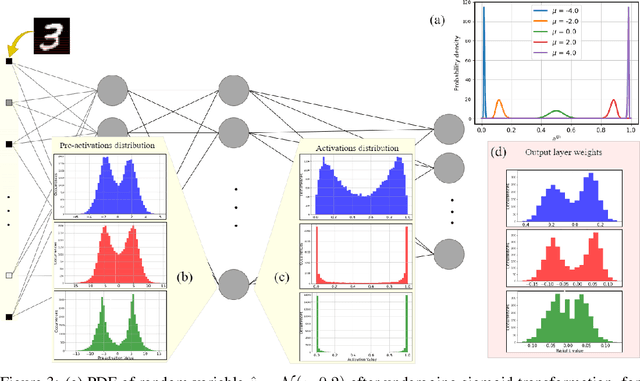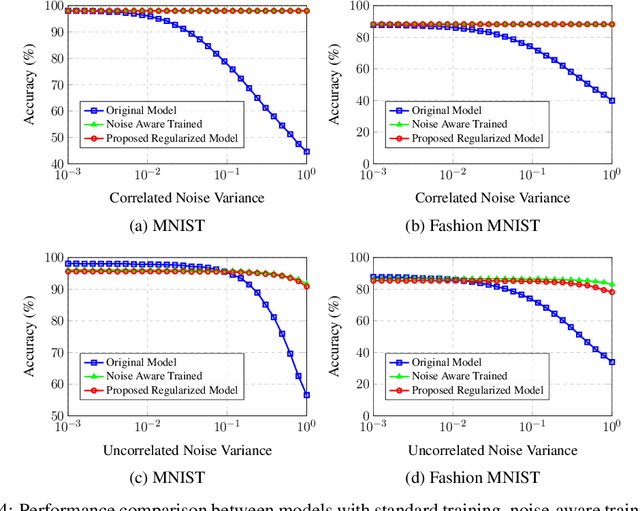Egor Manuylovich
Improving Analog Neural Network Robustness: A Noise-Agnostic Approach with Explainable Regularizations
Sep 13, 2024



Abstract:This work tackles the critical challenge of mitigating "hardware noise" in deep analog neural networks, a major obstacle in advancing analog signal processing devices. We propose a comprehensive, hardware-agnostic solution to address both correlated and uncorrelated noise affecting the activation layers of deep neural models. The novelty of our approach lies in its ability to demystify the "black box" nature of noise-resilient networks by revealing the underlying mechanisms that reduce sensitivity to noise. In doing so, we introduce a new explainable regularization framework that harnesses these mechanisms to significantly enhance noise robustness in deep neural architectures.
Artificial Neural Networks for Photonic Applications: From Algorithms to Implementation
Aug 02, 2024



Abstract:This tutorial-review on applications of artificial neural networks in photonics targets a broad audience, ranging from optical research and engineering communities to computer science and applied mathematics. We focus here on the research areas at the interface between these disciplines, attempting to find the right balance between technical details specific to each domain and overall clarity. First, we briefly recall key properties and peculiarities of some core neural network types, which we believe are the most relevant to photonics, also linking the layer's theoretical design to some photonics hardware realizations. After that, we elucidate the question of how to fine-tune the selected model's design to perform the required task with optimized accuracy. Then, in the review part, we discuss recent developments and progress for several selected applications of neural networks in photonics, including multiple aspects relevant to optical communications, imaging, sensing, and the design of new materials and lasers. In the following section, we put a special emphasis on how to accurately evaluate the complexity of neural networks in the context of the transition from algorithms to hardware implementation. The introduced complexity characteristics are used to analyze the applications of neural networks in optical communications, as a specific, albeit highly important example, comparing those with some benchmark signal processing methods. We combine the description of the well-known model compression strategies used in machine learning, with some novel techniques introduced recently in optical applications of neural networks. It is important to stress that although our focus in this tutorial-review is on photonics, we believe that the methods and techniques presented here can be handy in a much wider range of scientific and engineering applications.
Stochastic resonance neurons in artificial neural networks
May 06, 2022



Abstract:Many modern applications of the artificial neural networks ensue large number of layers making traditional digital implementations increasingly complex. Optical neural networks offer parallel processing at high bandwidth, but have the challenge of noise accumulation. We propose here a new type of neural networks using stochastic resonances as an inherent part of the architecture and demonstrate a possibility of significant reduction of the required number of neurons for a given performance accuracy. We also show that such a neural network is more robust against the impact of noise.
 Add to Chrome
Add to Chrome Add to Firefox
Add to Firefox Add to Edge
Add to Edge